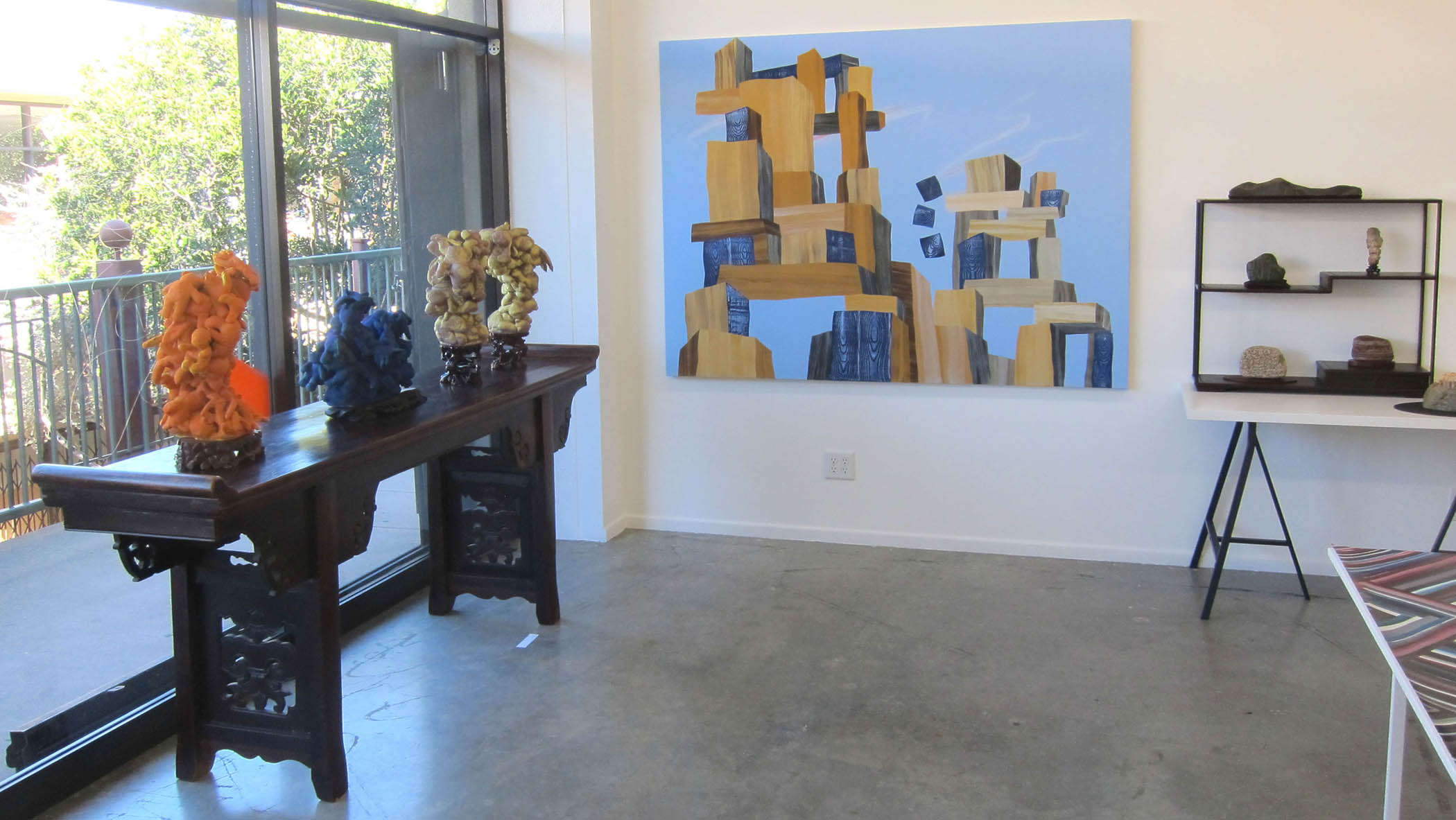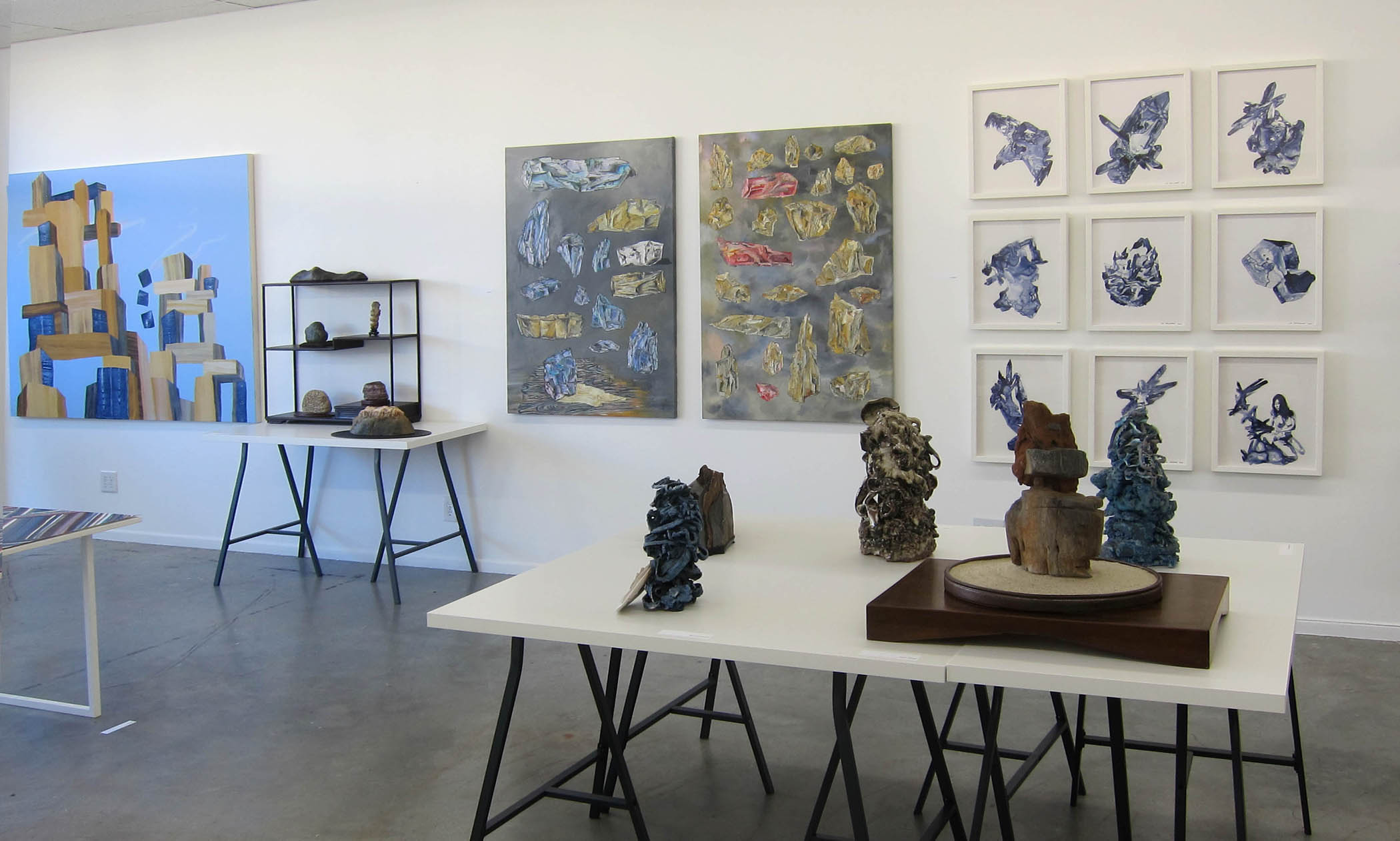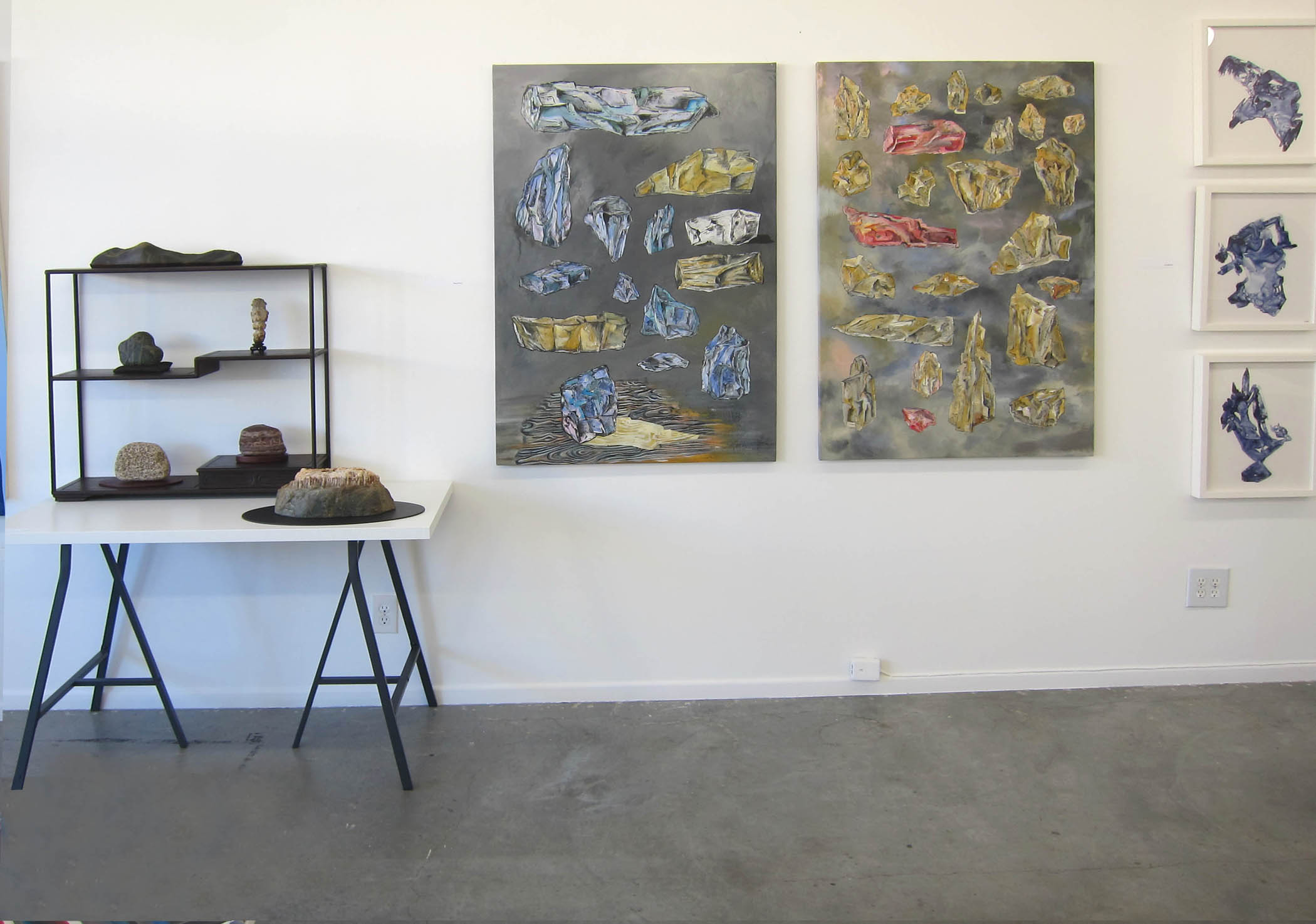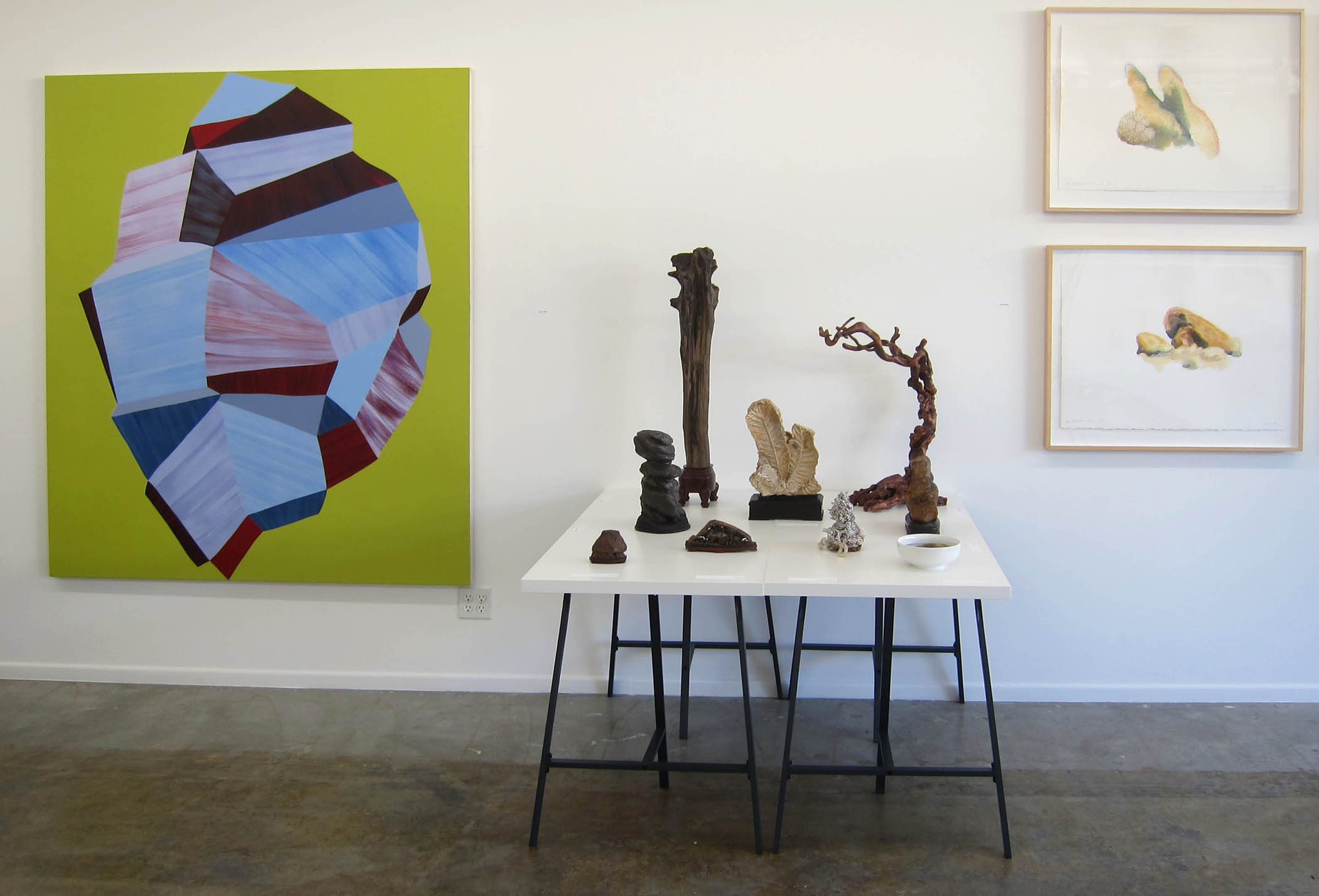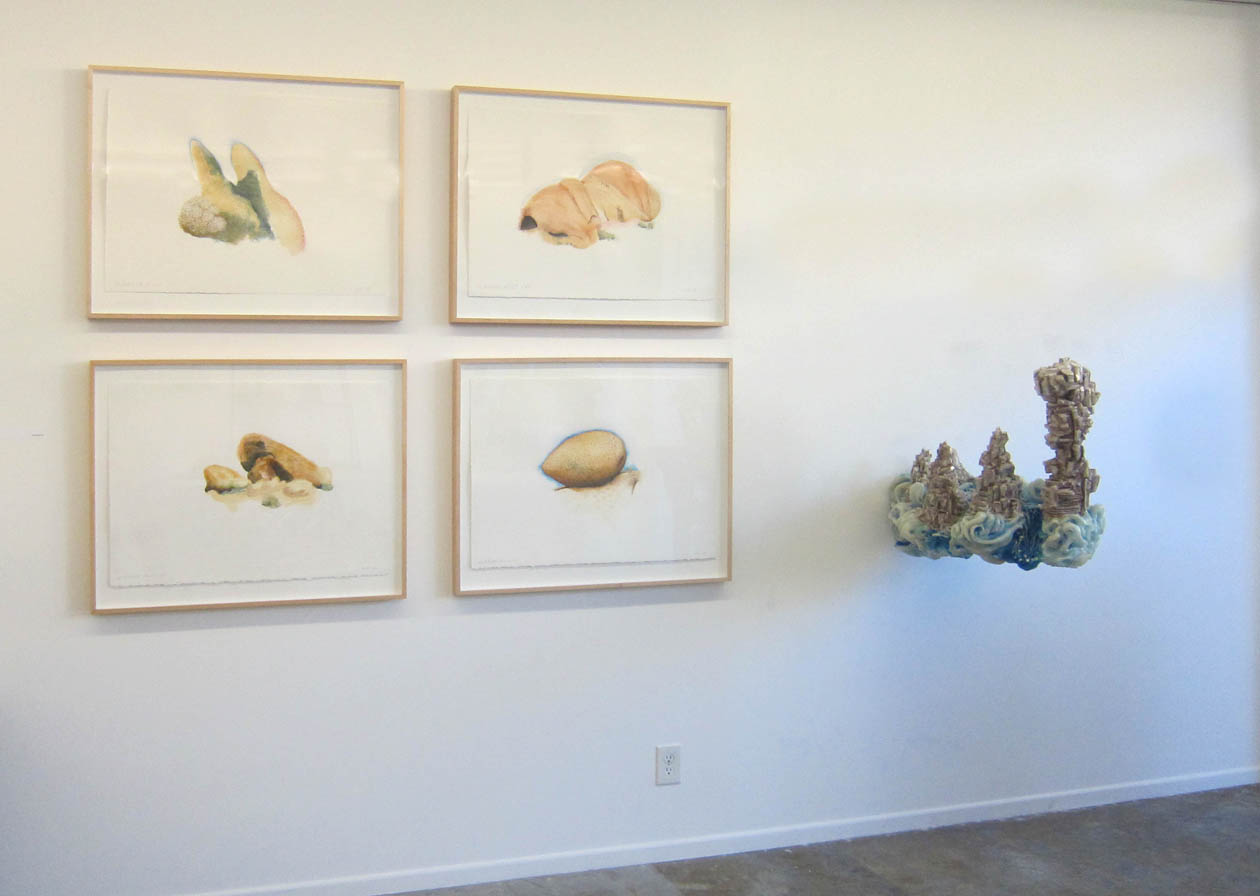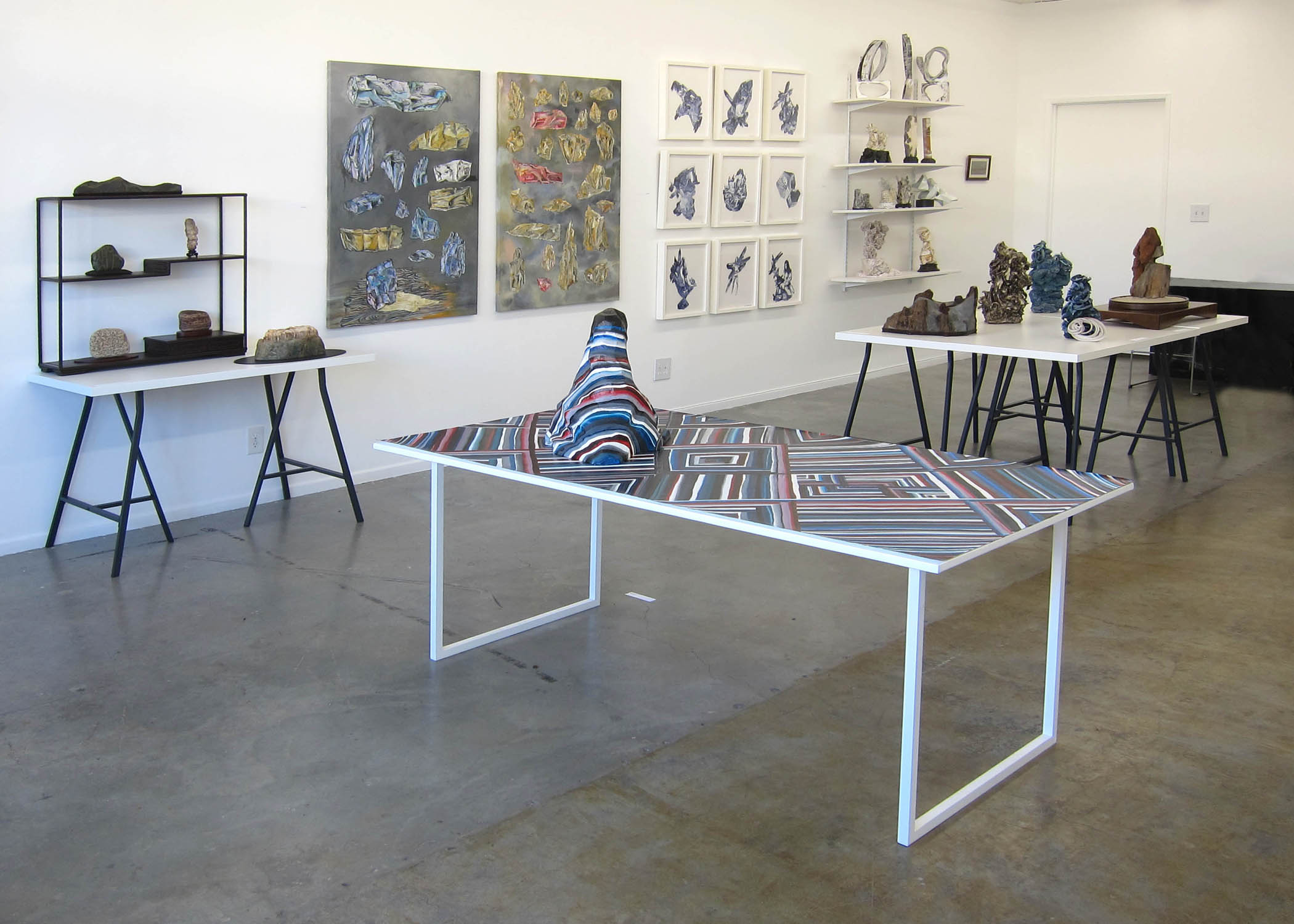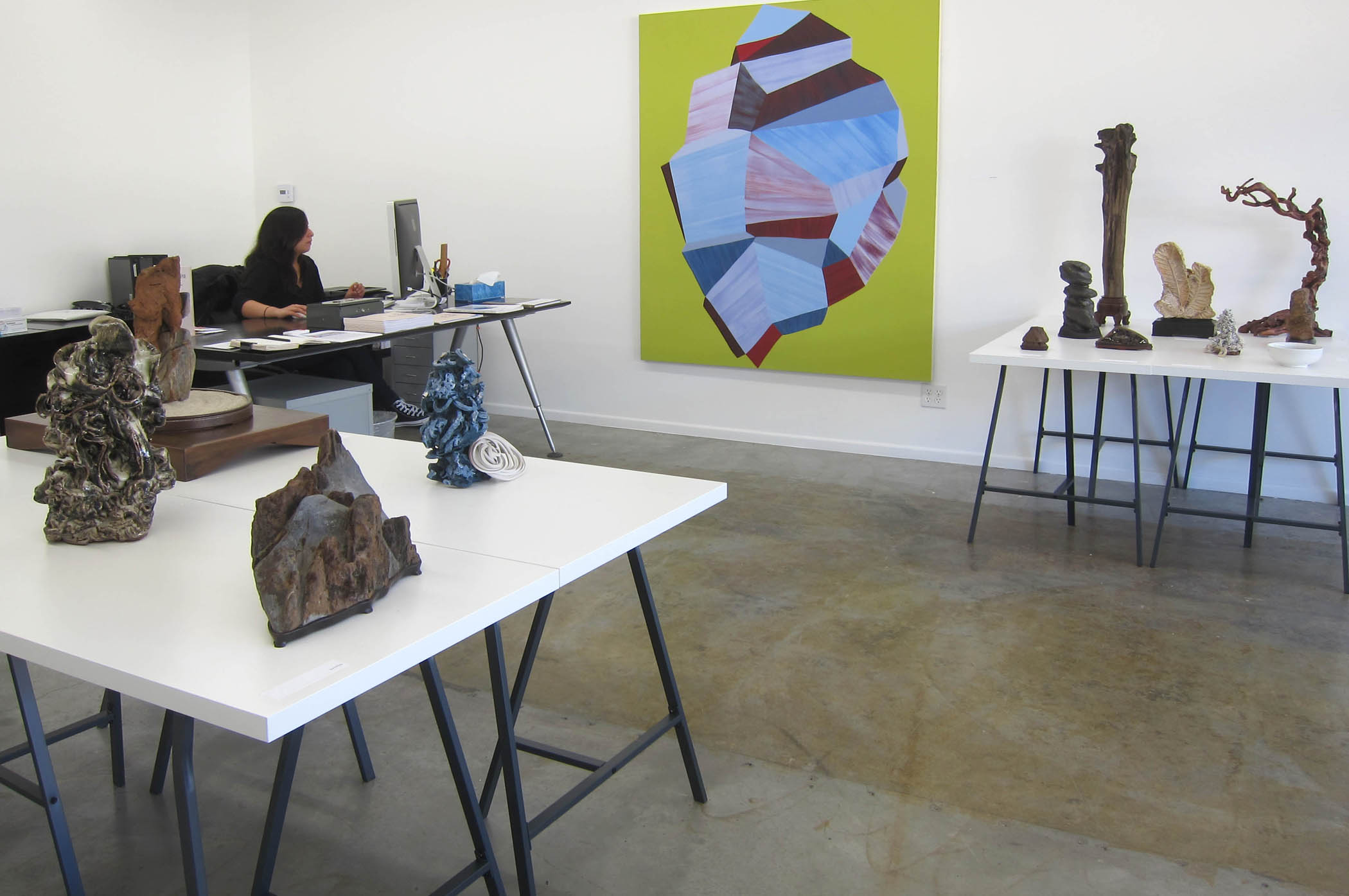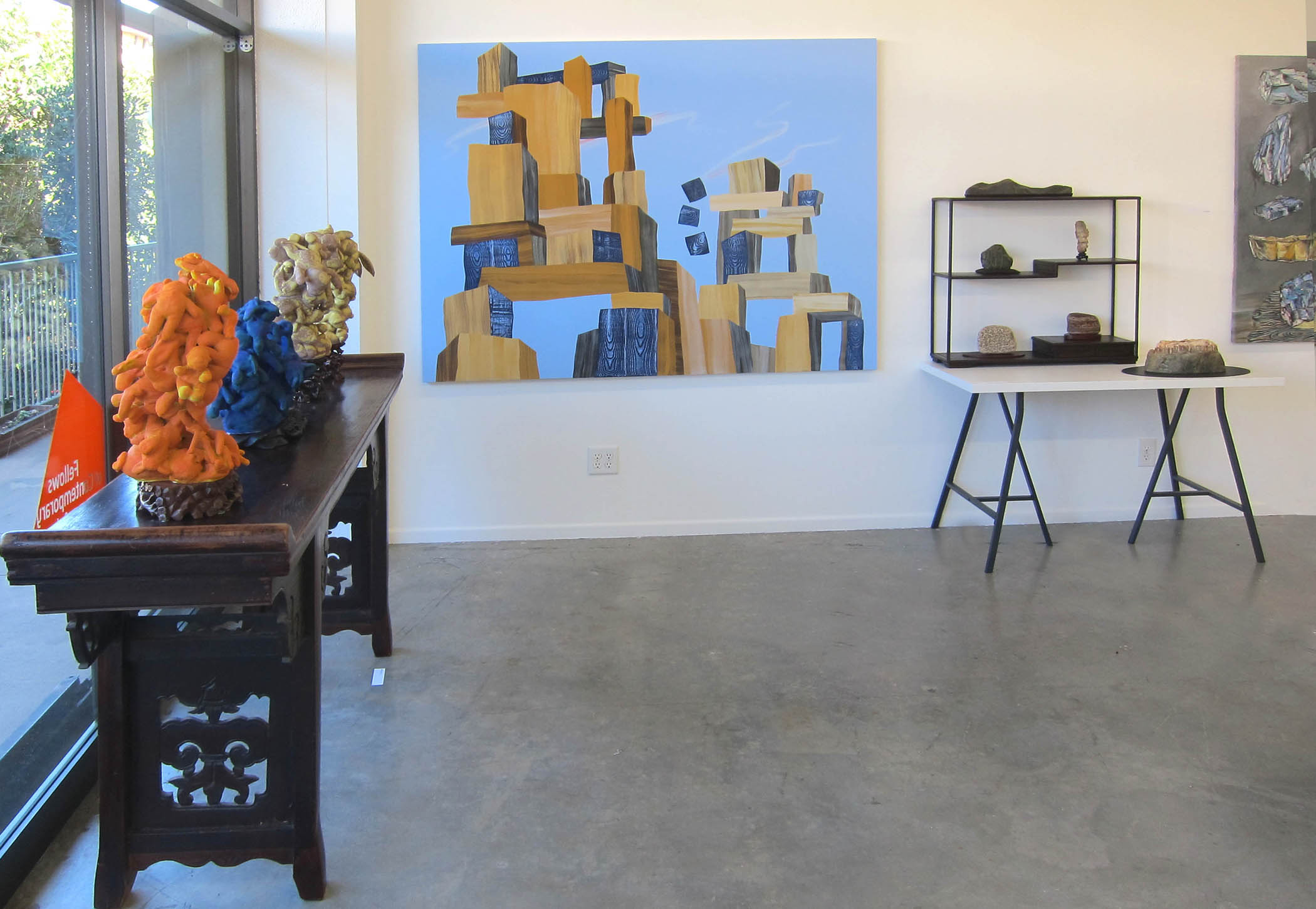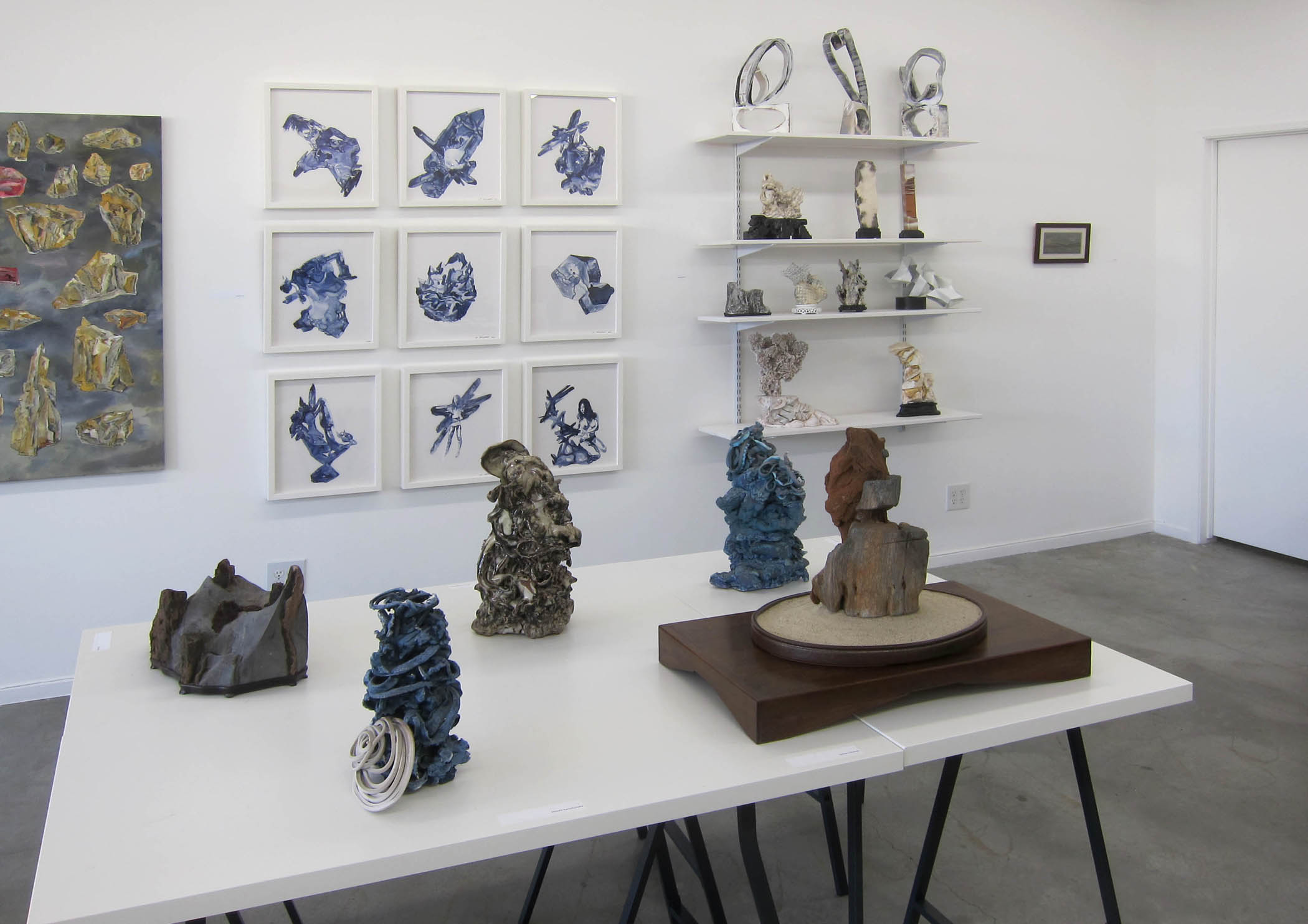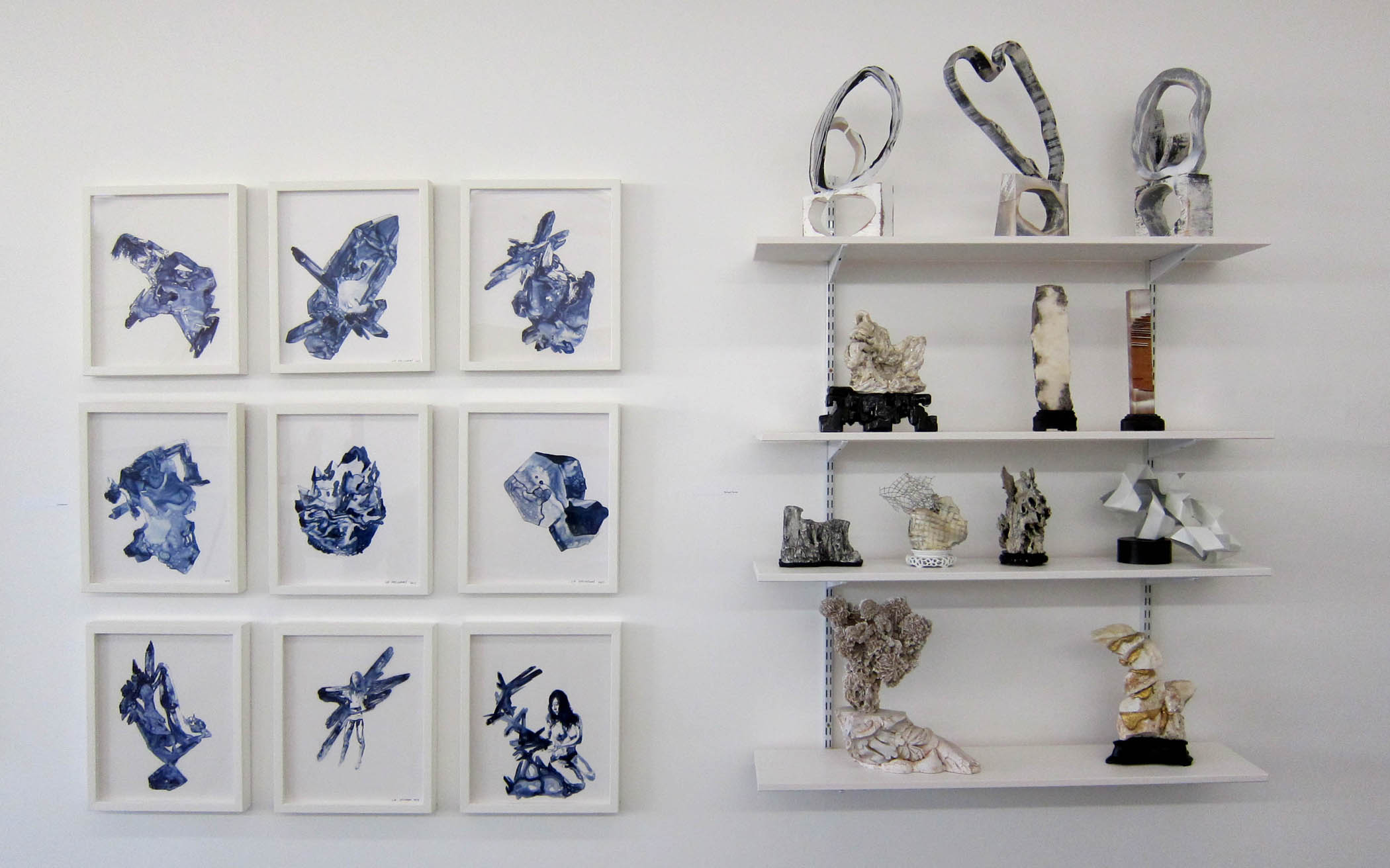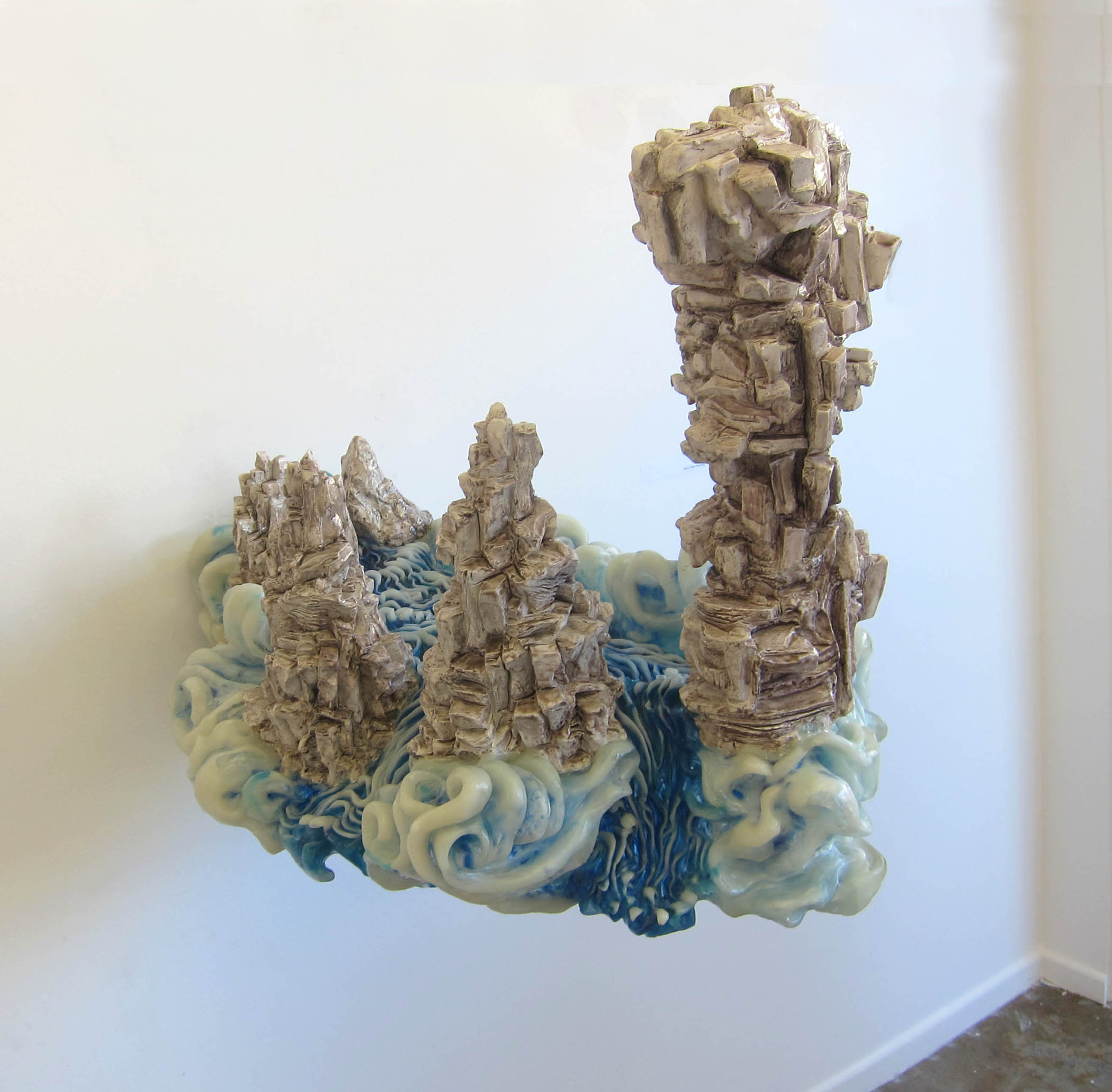Curators Lab, January 17 - March 13, 2015
Petraphilia The Love of Stones in their Curators Lab
Petraphilia: The Love of Stones is an exhibition in which viewing stones are displayed together with contemporary works of art inspired by the artists’ interest in Chinese scholar’s rocks, stones, boulders and the landscape. Exhibiting artists include Hilary Baker, Keiko Fukazawa, Lia Halloran, Jacci Den Hartog, Shoshi Kanokohata, Noel Korten, Pierre Picot and Richard Turner. Viewing stones on display are from the collections of Tom Elias, James Greaves and Freeman Wang. Petraphilia: The Love of Stones is curated by Richard Turner. A catalogue accompanies the exhibition.
All cultures have held certain stones in high regard. In China, however, a tradition of stone collecting and connoisseurship evolved that was unrivaled. Viewing stones were appreciated for their formal properties and for their ability to evoke distant landscapes, human and animal forms, deities and the physical and spiritual energies of the universe. Scholars’ rocks were collected and displayed as far back as the 10th century Song Dynasty in China. The tradition was introduced into Japan and by the 14th century a distinctly Japanese version, suiseki, was flourishing. The American viewing stone practice, which is barely a half-century old, derives from both the Japanese and Chinese traditions as they have been understood and interpreted by American practitioners.
Since the 1996 Metropolitan Museum of Art exhibition Worlds Within Worlds: The Richard Rosenblum Collection of Chinese Scholars’ Rocks introduced western artists to viewing stones, artists as diverse as Roy Lichtenstein and Ugo Rondinone, Zhan Wang and Arlene Shechet, Brice Marden and Andrea Cohen have been working with ideas inspired by their encounters with viewing stones. However, there have been very few exhibitions of such work displayed alongside the stones themselves. Petraphilia: The Love of Stones will be a first for Los Angeles.
Artists
Hilary Baker characterizes her paintings as portraits of stones, not in the sense that they are faithful representations of the physical details of the rock, but rather as evocations of the essence of the stone based on careful study of its properties. Keiko Fukazawa’s cast ceramic Beanie Babies configured as Chinese scholar’s rocks, use a traditional form as a vehicle for a critique of child labor practices in a globalized society. Lia Halloran’s ink-on-film drawings of crystal structures with figures emerging from and disappearing into them are performative negotiations with the unpredictable “self-animating” ink, the drawing process an analogy for the growth of the crystals themselves. Jacci Den Hartog's tabletop pieces are answers to her question. "How does one paint a landscape without doing a landscape painting?" The Navajo blanket patterns that run riot over her rocky forms animate her landscapes with a psychedelic anxiety. Shoshi Kanokohata describes his ceramic sculptures as being somewhere between an object that he has found and one that he has made. He sees the forces involved in the production of his sculptures as being analogous to the natural forces that shape stones. Noel Korten views the landscape as a Rorschach test. His watercolors of the desert landscape are deliberately ambiguous so that the viewer can have the same experience with his paintings that he had with the landscape: finding their own imagined forms reflected in his indeterminate images. Pierre Picot’s precise drawings of tiny stones from the gravel in his driveway are his a means of participating in the grand tradition of European landscape painting and establishing a bond with the natural world as he experiences it in Bretagne, France. Richard Turner’s work deliberately obscures the distinctions between the artist and the connoisseur, east and west, convention and innovation. His piece includes traditional and contemporary viewing stones and found-object sculptures.
Viewing Stone Collectors
For Thomas Elias the diversity of his collection is the key to understanding contemporary viewing stone practices and keeping abreast of the latest developments around the globe. The stones he displays in this exhibition reflect the broad range of his interests. James Greaves repurposes a traditional piece of Japanese display furniture and employs it to present a grouping of stones that evoke memories of the archeological digs in Greece and Turkey where he worked on summers abroad and the Turkish ceramics that he collected at an earlier time in his life. Freeman Wang grew up around stones. He was born in the city of Luzhou which is sometimes referred to as the stone capitol of China. He chooses stones for himself, and encourages his clients to select stones, based on whether or not the stone “talks to you”.

